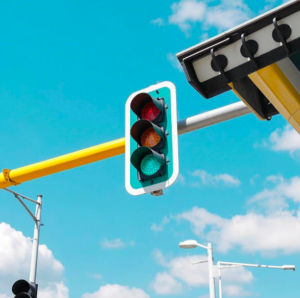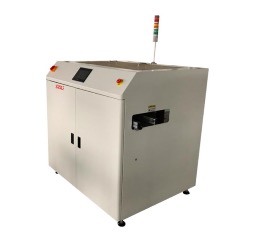In recent years, LED traffic signals have become an essential part of modern traffic management systems. Their energy efficiency, durability, and enhanced visibility have made them a preferred choice for traffic control in cities worldwide. But what exactly is an LED traffic signal, and how does it benefit both road users and traffic authorities?

Table of Contents
ToggleWhat is an LED Traffic Signal?
An LED traffic signal is a type of traffic light that uses light-emitting diodes (LEDs) to display colors such as red, yellow, and green to regulate traffic flow. Unlike traditional incandescent bulbs, which have a shorter lifespan and higher energy consumption, LED lights use significantly less power and last much longer. This makes them a cost-effective and sustainable solution for managing traffic at intersections and pedestrian crossings.
Advantages of LED Traffic Signals
One of the most notable benefits of LED traffic signals is their energy efficiency. LED lights consume up to 80% less energy compared to conventional incandescent traffic lights, which leads to substantial savings on electricity bills for cities. This reduction in energy use also contributes to the overall reduction in carbon emissions, supporting the global push for more sustainable urban development.
Another advantage of LED traffic signals is their longer lifespan. Traditional incandescent bulbs may need to be replaced every 1-2 years, while LEDs can last for 10 years or more. This significantly reduces maintenance costs and the frequency of traffic signal outages, ensuring a more reliable and continuous flow of traffic. Moreover, LED traffic signals are designed to withstand extreme weather conditions, including rain, snow, and high temperatures, making them suitable for diverse climates.
Improved Visibility and Safety
The bright and clear illumination of LED traffic signals greatly enhances visibility for drivers and pedestrians. The color intensity of LED lights ensures that they are visible from a longer distance, even in adverse weather conditions such as fog or heavy rain. This improved visibility helps reduce the likelihood of accidents caused by drivers failing to notice a traffic signal.
In addition, LED traffic signals can be customized to improve the safety of specific intersections. For example, some systems are equipped with smart technology that allows for the dynamic adjustment of signal brightness based on traffic conditions and time of day. This adaptability ensures that the traffic signal remains effective in different traffic scenarios.
Future of LED Traffic Signals
As cities continue to adopt smart technologies for urban management, the future of LED traffic signals looks promising. With the integration of sensors, cameras, and AI systems, LED signals are expected to become even more intelligent. For instance, in the near future, LED traffic lights could communicate with autonomous vehicles to improve traffic flow and reduce congestion. Furthermore, advanced traffic management systems can use real-time data from LED signals to optimize traffic patterns, reducing delays and enhancing road safety.
Conclusion
LED traffic signals represent a major advancement in traffic control technology. Their energy efficiency, long lifespan, and improved visibility make them a smart investment for cities aiming to modernize their traffic management systems. As we move toward a more connected and sustainable urban future, LED traffic signals will continue to play a crucial role in ensuring the safety and efficiency of our roadways.
0





